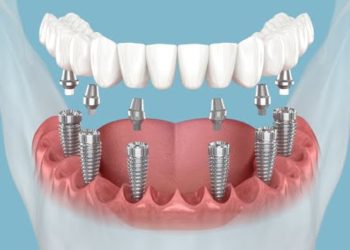Imagine yourself in a world that is glowing softly and warmly, where everything is crystal clear, and where the colors are vibrant. Imagine that environment now slowly dissipating into a fuzzy blur. That is the silent invasion of cataracts, which can reduce the brightness of life itself in addition to obstructing your vision.
We’ll set out on an informative voyage into the world of cataract awareness in this blog. We’ll investigate how to stop these ocular enemies from sneaking up on you and how to treat them, all in an effort to help you restore your bright world.
What Are Cataracts?
A cataract is a sneaky ninja, a foggy formation that sneaks onto your eye’s lens, casting a cloud of fog over your vision. It’s not harmful, but it can be dangerous if left untreated.
How Cataract Awareness Can Enhance the Quality of Life?
Cataracts impact millions of people worldwide, with more than 90 percent of those affected living in low-income countries (LICs). With nearly eight million people suffering from cataract-related blindness, India suffers a disproportionate burden.
This eye problem is intricately linked to poverty, triggering an endless cycle in which poverty causes blindness, which in turn exacerbates poverty. Cataract-related visual impairment has far-reaching repercussions that go beyond the inability to see well, affecting the overall standard of life, general health, social position, and even mortality rates.
Impact of Visual Impairment on Quality of Life
Loss of vision invariably results in a decrease in a person’s quality of life. The overall health of individuals and civilizations is represented by quality of life, which is significantly more complex than just visual acuity (VA). Unfortunately, research on the quality of life post cataract surgery is lacking from numerous LICs, including India. The prospective benefits of such investigations, however, are apparent.
- Reclaiming Autonomy and Social Life
Cataract patients frequently make considerable life changes to deal with their diminished vision. They may give up night driving, reading, or other leisure activities they used to love. These modifications can result in social isolation and loss of independence. According to studies, the quality of life improves dramatically following cataract surgery as opposed to people who did not have the procedure. Long-term studies have indicated a remarkable 40% decrease in mortality rates for individuals who choose cataract surgery, highlighting the treatment’s potential to lengthen one’s longevity.
- Reducing Accidental Falls:
Accidental falls become more likely as we age and are therefore more deadly. Patients who have had cataract surgery, however, are less likely to trip and suffer catastrophic injuries. A study of Medicare users aged 65 and up discovered a 16% in the one-year rate of hip fractures post-cataract surgery, with those in their 80s benefiting the most. Fewer falls result in lower healthcare expenditures and better general well-being.
- Lesser Road Mishaps and Better Mental Function
Cataract surgery improves not only your physical health but also your psychological health and mental agility. Long-term research from several regions, including Ontario, Canada, and Perth, Western Australia, has found that cataract surgery reduces police-reported car crashes by 9% to 13%. Fewer traffic accidents result in fewer injuries and lower social expenses. Furthermore, a new English study reveals that persons who have had cataract surgery have superior mental function in their later years. They delay the deterioration of cognitive function by 50% as compared to their non-procedure counterparts.
The Three Cataract Thieves
Cataracts are classified into three types: nuclear, cortical, and posterior subcapsular. Let’s analyze each of these intriguing adversaries.
- Nuclear Cataracts
- These cunning devils live at the lens’s center (the nucleus).
- As they progress, they may become yellow or brown – a true chameleon act!
- While they may temporarily improve your reading vision, they are renowned for distorting your entire vision over time.
- Cortical Cataracts
- Consider these as sly invaders, beginning as ghostly, pale streaks at the lens cortex’s periphery.
- They sneak in and disrupt the light traveling through the lens, causing glare and illusion of depth difficulties.
- Cataracts of the Posterior Subcapsular Lens
- These offenders begin as little, sinister spots, frequently lurking at the rear of the lens, directly in the line of light.
- They enjoy causing halos and glare around lights, as well as interfering with your reading vision and bright light vision. They are faster and more furious than their rivals.
A Prediction for the Future
Cataract procedure, it seems, can not only restore vision but also turn back time! Almost half (45%) of post-surgery patients claimed to have the vision of a younger person. A true vision revitalization!
And here’s a bonus: Despite common misunderstandings, more than 8 in 10 consumers believed that eyecare specialists are the best advisors when it comes to cataracts.
Raising Awareness on Cataract: The Visionary Tej Kohli and Ruit Foundation
As we go more into the realm of cataract awareness, it becomes evident that recognizing and dealing with this visual difficulty can dramatically improve the overall standard of life for countless people. Cataracts, those unseen vision disruptors, throw a pall over the once-vibrant world.
But, in the midst of the search for clarity and vision, a wonderful force has emerged: the Tej Kohli and Ruit Foundation. This nonprofit, pioneered by philanthropist Tej Kohli and the internationally acclaimed ‘God of Sight,’ Dr. Sanduk Ruit, not only shares our enthusiasm for cataract awareness but also epitomizes the very essence of helping lives through visual health.
Their objective is to create a brighter, more welcoming future by healing untreated cataract blindness on a large scale in the impoverished globe. Join us on this illuminating trip as we investigate how cataract awareness is paving the way for a future where vision is no more a privilege but a fundamental right, in line with the #2030InSight initiative and the UN’s Sustainable Development Goal to abolish extreme poverty.
Bringing Cataracts to Light: Cataract Awareness Month
Every June, the entire world observes Cataracts Awareness Month. It’s time to shine a light on the shadows created by cataracts, which are among the primary causes of vision loss. These stealthy intruders might have a negative impact on a person’s quality of life. During this campaign, their goal is simple yet powerful: they spread awareness about cataracts and help individuals who are affected by this eye illness.
The Tej Kohli and Ruit Foundation addresses one of the main reasons for extreme poverty by curing cataract blindness. When people regain their vision, they can return to work, support their families, and proactively participate in their communities. This cascade effect makes everyone’s future brighter.
Bringing Back Sight, Bringing Back Hope
The foundation’s strategy is stunningly simple yet immensely effective. They put together teams of highly competent eye care specialists and deploy cutting-edge mobile surgical units to far-flung places where people are most in need. These surgical camps aim to do more than just restore sight; they also aim to restore hope, preserve dignity, and open doors to new prospects.
A Change-Making Ensemble
The foundation works together with local healthcare organizations and governments to achieve a long-term impact. They provide expertise and resources to these institutions, allowing them to carry on the battle against unnecessary blindness. They march together towards a world in which no one is left in the shadows of cataract blindness.
The Tej Kohli and Ruit Foundation exemplifies what vision, perseverance, and partnership can accomplish. They are illuminating a route towards better days for all, not simply restoring sight.
David Prior
David Prior is the editor of Today News, responsible for the overall editorial strategy. He is an NCTJ-qualified journalist with over 20 years’ experience, and is also editor of the award-winning hyperlocal news title Altrincham Today. His LinkedIn profile is here.













































































